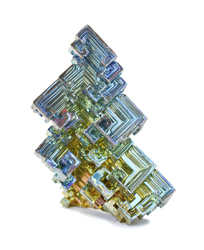Nano-structured bismuth for high added value
Bismuth has been proposed as a green alternative to heavy metals such as lead and mercury. In addition, the advent of nanotechnology has opened new doors for high-tech applications of nano-scale bismuth and bismuth-related materials, a currently untapped market potential. Nineteen partners from Europe and Mexico initiated the EU-funded project 'Functionalities of bismuth based nanostructures' (BISNANO) to synthesise and fully characterise the materials with an eye on potential applications for added value. Important benefits are expected for the Mexican economy and outcomes will also support development of novel products throughout Europe and Mexico. Over 30 bismuth-based nanomaterials were synthesised during the course of the project, including nanoparticles, nano alloys, nanocomposites and thin films. These were characterised for application in products such as sensors, anti-counterfeiting tags, fire-retardant polymers and self-lubricating coatings. Several prototypes developed with industrial partners or third-party contacts have potential for leading to spin-off companies or directly to industrial products. In fact, one application is currently on the market. Other prototypes were shown at international fairs and outcomes have led to submission of a patent for a nanofilter system. Safety and risk associated with nanoparticle use is an important part of any research and development programme related to nanomaterials, and BISNANO was no exception. Partners investigated the effects of bismuth-related nanomaterials on cells. With novel visualisation approaches, the team was able to see inside cells to evaluate sub-cellular localisation of metallic nanoparticles and uptake dynamics. Overall, studies support the safety of bismuth-based nanomaterials to public health and the environment. The tremendous progress led to more than 22 publications in peer-reviewed scientific journals and a joint proposal from 3 BISNANO partners for follow-up work in a new Seventh Framework Programme (FP7) project. Several symposia on the new topic were organised. BISNANO could well turn the low-value mining of bismuth into a high-tech, high added-value enterprise with important benefits for Mexico and the EU. The ecological benefits of this green metal would make the public a beneficiary of the fruitful collaboration as well.
Keywords
Bismuth, nanomaterial, nanoparticle, heavy metal, green alternative







